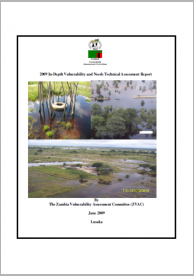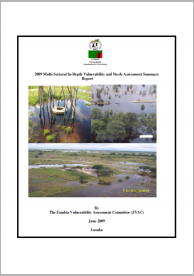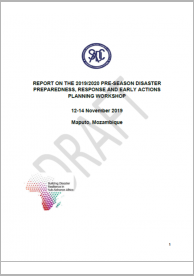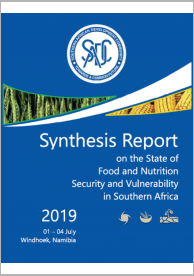
Determine the impact of the 2009/10 floods on various sectors of the economy in 17 districts of Zambia.
The following is a list of all conten labeled as "Risk Identification & Assessment"

Determine the impact of the 2009/10 floods on various sectors of the economy in 17 districts of Zambia.

Determine the impact of the 2008/9 floods on various sectors of the economy in 20 districts of Zambia.

Determine the impact of the 2008/9 floods on various sectors of the economy (Summary Report).

Risk-informed development allows for development to become a vehicle to reduce risk, avoid creating risks and build resilience. Only resilient development can become sustainable development; sustainable development initiatives will fail unless they are risk-informed. Risk, resilience and sustainability knowledge and actions need to go hand-in-hand.

The Risk, Vulnerability and Capacity Assessment (RVCA) for Kilosa district aimed to identify disaster risks, vulnerability and capacities in the district. The findings from the RVCA form the basis for the preparation of the District’s Emergency Preparedness and Response Plan (DEPRP).

The Disaster Vulnerability Assessment Phase two study is aimed at determining the type, location and frequency of the disasters at national and regional level. To identify the current capacity and coping systems (organizational arrangement) at national and regional level.

The SADC Member States disaster risk reduction and management technical managers convened to the 2019/2020 Pre-Season Disaster Preparedness, Response and Early Action Planning Workshop which was held 12-14 November 2019, in Maputo, Mozambique.

This report provides an overview of vulnerability across the region, especially as it relates to food and nutrition security. Central to its analysis is the information provided by respective National Vulnerability Assessment Committees at the Regional Vulnerability Assessment and Analysis Annual Dissemination Forum, held from 01 to 04 July 2019 in Windhoek, Namibia.